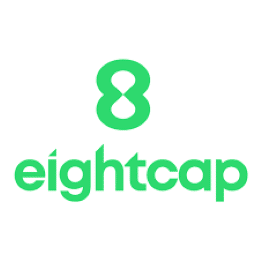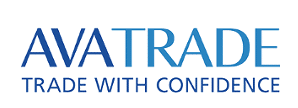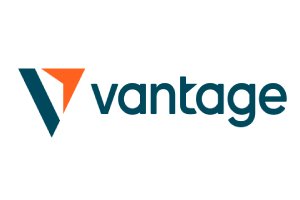Ethereum is gearing up for one of its biggest upgrades yet. The Fusaka hard fork goes live on December 3, 2025, and it’s bringing changes that could reshape how the network handles transactions for years to come.
Fusaka triples the block gas limit from 45 million to 150 million, which means Ethereum can process way more transactions in each block.
But the real story goes deeper than just raising limits. Fusaka introduces two technical improvements that fundamentally change how Ethereum manages data.
These changes matter whether you’re a developer building on the network, a trader watching ETH’s value, or someone who just wants DeFi apps to work smoothly.
The Technical Upgrades That Fusaka Brings
Let’s talk about PeerDAS first, which stands for Peer Data Availability Sampling. Right now, validators have to download entire data blobs to verify transactions and keep the blockchain running.
PeerDAS flips that model on its head. Validators can now sample small, random pieces of data from different sources instead of downloading everything. This approach effectively doubles Ethereum’s throughput while reducing the burden on node operators.
The second major addition is Verkle Trees, which is a new data structure for organizing blockchain information. Current methods require massive cryptographic proofs to verify the state of the network.
Verkle Trees compress those proofs into much smaller packages that are faster to check and easier to store.
As Ethereum keeps growing, this prevents the blockchain from becoming so bloated that only people with serious hardware can run nodes.
There’s also a smart approach to expanding blob storage, which was first introduced in the Dencun upgrade back in 2024. After Fusaka launches, blob capacity will increase gradually over two weeks rather than all at once.
Why the Testing Process Is So Important
Ethereum has learned from past mistakes, which is why Fusaka won’t just appear on mainnet without preparation. The upgrade goes through three separate testnet phases before the final launch. Holesky kicks things off on October 1, followed by Sepolia on October 14 and Hoodi on October 28.
Each testnet phase helps developers identify bugs, measure performance under different conditions, and fix problems before they affect real users.
The Ethereum Foundation is also running a four-week bug bounty program with rewards up to $2 million for anyone who finds critical vulnerabilities. That’s a serious chunk of money, and it shows how much the community values getting this right.
What This Means for Everyone Using Ethereum
If you’re using Ethereum regularly, you’ll likely notice faster transaction confirmations during peak hours when the network gets congested. Gas fees should become more predictable, though they’ll still fluctuate based on demand.
Layer 2 solutions like Arbitrum, Optimism, and Base will work more efficiently because they rely heavily on blob data to post transactions back to mainnet.
Developers get better infrastructure to build with, which matters more than you might think. More blob capacity means rollups can handle higher transaction volumes without bottlenecks.
PeerDAS reduces the bandwidth requirements for validators, making it more practical for regular people to run nodes.
When the barrier to entry drops, the network stays more decentralized, which is the whole point of Ethereum in the first place.
For investors and traders watching ETH’s price, Fusaka represents Ethereum’s ability to compete with faster chains like Solana and Avalanche.
Those networks built high throughput into their core design, but Ethereum is proving it can evolve without compromising on decentralization or security. That adaptability has long-term value in a market where new competitors keep emerging.
Where Ethereum Goes From Here
Fusaka isn’t the final chapter in Ethereum’s scaling story. Developers are already planning Glamsterdam for 2026, which will push things even further.
But this December marks a real inflection point where Ethereum shifts from a network that occasionally struggles with demand to one that’s built for serious growth.
The upgrade connects all the work that’s been happening over the past few years. The Merge in 2022 made Ethereum environmentally sustainable by switching to proof-of-stake.
Dencun in 2024 introduced blobs that made Layer 2 transactions dramatically cheaper. Fusaka takes that foundation and expands it, giving the network room to breathe as adoption continues climbing.
December 3 is a date worth remembering if you’re involved in crypto at all. The testnet phases over October and November will show whether everything works as intended.
Assuming they do, Ethereum enters 2026 as a fundamentally more capable network than it was even a year earlier. That’s the kind of progress that keeps Ethereum relevant as the smart contract platform that others measure themselves against
Interested In Trading The Market With A Trustworthy Partner? Try Eightcap Today.
- Broker
- Min Deposit
- Score
- Visit Broker
- Award-winning Cryptocurrency trading platform
- $100 minimum deposit,
- FCA & Cysec regulated
- 20% welcome bonus of upto $10,000
- Minimum deposit $100
- Verify your account before the bonus is credited
- Fund Moneta Markets account with a minimum of $250
- Opt in using the form to claim your 50% deposit bonus
Learn to Trade
Never Miss A Trade Again

Signal Notification
Real-time signal notifications whenever a signal is opened, closes or Updated

Get Alerts
Immediate alerts to your email and mobile phone.

Entry Price Levels
Entry price level for every signal Just choose one of our Top Brokers in the list above to get all this free.



